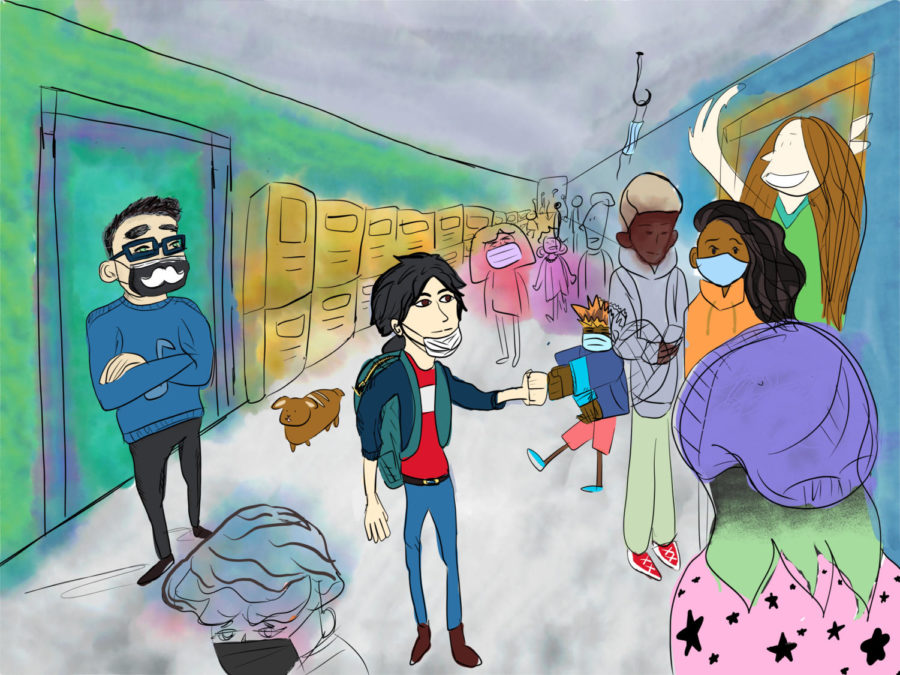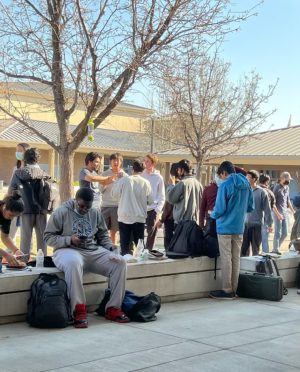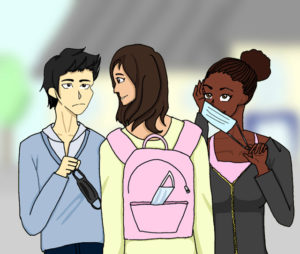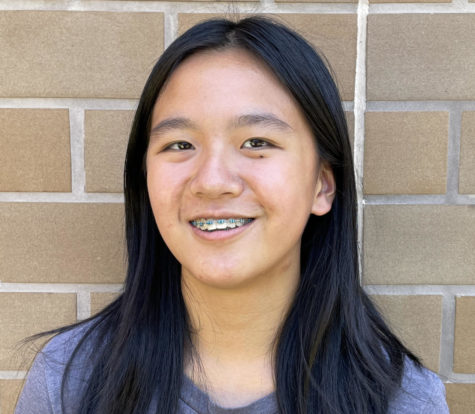Teachers stray away from wearing masks to improve connections with students
While very few teachers still wear a mask, a significant portion of students still do wear a mask.
October 17, 2022
As COVID cases have begun to decrease this year, an influx of teachers have stopped wearing masks at school.
Justin Worley, an English teacher who no longer wears a mask, corroborates, “It seems like the majority [of teachers] don’t [wear a mask].”
While some students have also discontinued wearing a mask, a sizable portion of the student body still wear a mask compared to the teachers.
“I would say more than half of my students [still wear a mask],” Jeffery Vangene, a History teacher, verified.
For the most part, those who chose to stop wearing a mask started to do so after the Contra Costa County guidelines regarding mask wearing were changed last year, reassuring people that wearing a mask is no longer a necessity.
“There is never going to be a no-risk scenario, [so] I’m just going off the county health guidelines,” Worley says.
Getting vaccinated also seems to be an important factor in an individual’s decision about whether or not to wear a mask.
“As far as my vaccination status and having gotten it before this [school] year [started], I feel like everything’s kind of [a] managed risk,” Worley commented.
On the other hand, some teachers and students still wear a mask due to the vaccination status of themselves or a family member.
“I still wear [a mask] because I have a six-month-old at home who just started the vaccine process but [hasn’t] gotten all the way through,” Jeffrey Vangene, one of the teachers who continues to wear a mask, explained.
Another reason for continuing to wear a mask is having pre-existing health conditions or living with someone who has such conditions.
“I have people close to me that have asthma and other pre-existing conditions, [and] I didn’t want to be the one that [gave] it [to] them,” Vangene says.
However, all of these reasons weigh equally for both teachers and students, for the most part. One of the unique reasons that more teachers specifically prefer not to wear a mask is to facilitate better verbal and non-verbal communication with their students.
“It’s easier [to teach without a mask] mostly because we talk all day, but I would say what’s even more important than that is facial expressions and communicating non-verbally,” Worley explains.
Despite the fact that he chooses to wear a mask, Vangene also admits that there are benefits to not wearing a mask.
“Facial expressions are a lot of our communication. There’s certain ways that we communicate with our students that aren’t always auditory, and when you have half of your face covered, that is a little hard to see. It’s just way easier to teach without a mask on,” he stated.






